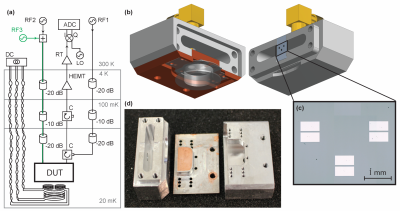Three-dimensional (3D) superconducting microwave cavities with large mode volumes typically have high quality factors (>106). This is due to a reduced sensitivity to surface dielectric losses, which is the limiting source of dissipation in two-dimensional transmission line resonators. In recent years, 3D microwave cavities have been extensively used for coupling and interacting with superconducting quantum bits (qubits), providing a versatile platform for quantum information processing and hybrid quantum systems. A current issue that has arisen is that 3D superconducting cavities do not permit magnetic field control of qubits embedded in these cavities. In contrast, microwave cavities made of normal metals can be transparent to magnetic fields, but experience a much lower quality factor (∼104), which negates many of the advantages of the 3D architecture. In an attempt to create a device that bridges a gap between these two types of cavities, having magnetic field control and high quality factor, we have created a hybrid 3D cavity. This new cavity is primarily composed of aluminium but also contains a small copper insert. We measured the internal quality factor of the hybrid cavity to be 102000, which is an order of magnitude improvement over all previously tested copper cavities. An added benefit to that our hybrid cavity possesses is that it also provides an improved thermal link to the sample that superconducting cavities alone cannot provide. In order to demonstrate precise magnetic control within the cavity, we performed spectroscopy of three superconducting qubits placed in the cavity, where individual control of each qubit's frequency was exerted with small wire coils attached to the cavity. A large improvement in quality factor and magnetic field control makes this 3D hybrid cavity an attractive new platform for circuit quantum electrodynamics experiments.




